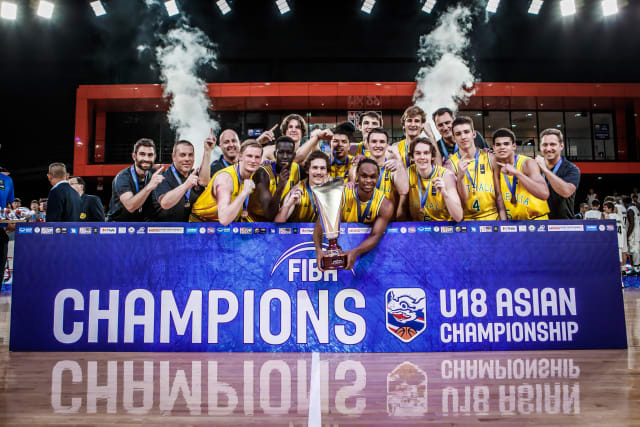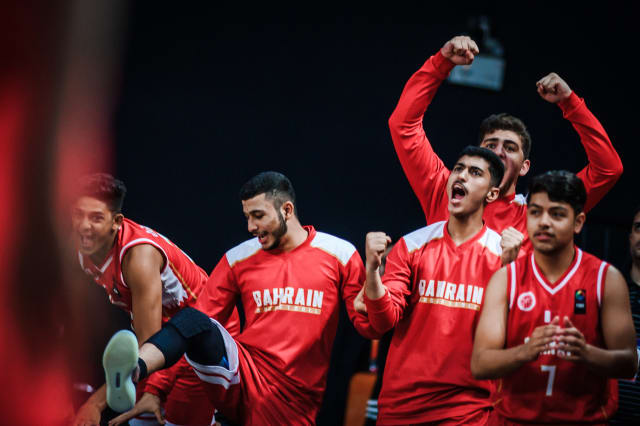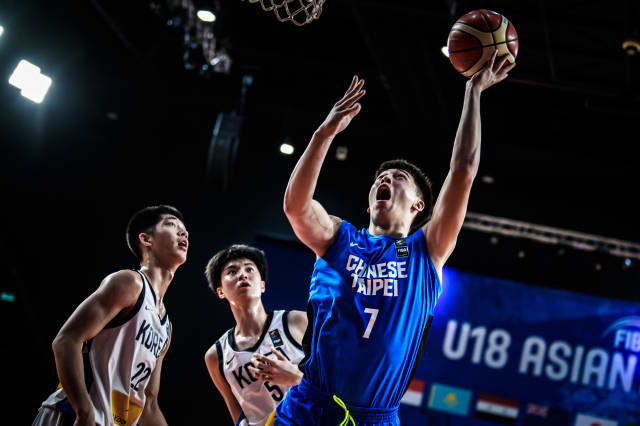10 Things we learned from the FIBA U18 Asian Championship 2018
NONTHABURI (FIBA U18 Asian Championship) – It’s been a wildly entertaining 7 days with the region’s top youth players and it has now come to an end. Here are 10 things we learned from the past week!
NONTHABURI (FIBA U18 Asian Championship) – It’s been a wildly entertaining seven days with the region’s top youth players which has now come to an end. There have been ups and downs throughout the entire week of action, combining into a memorable experience for everyone involved. Now we take a look back at all the events and filter some significant findings.
Here are 10 things we learned from the FIBA U18 Asian Championship 2018:
[orderedList] Australia is good. Really Good. [/orderedList]In the span of a year, Australia has introduced themselves to FIBA Asia competition by winning the FIBA Asia Cup, the FIBA U16 Asian Championship, and now the FIBA U18 Asian Championship 2018.

The inevitable take is that Australia is very, very good at playing basketball. In the FIBA U18 Asian Championship 2018, they beat teams by an average margin of 44.7 points. Aside from a tightly contested championship game, Australia easily strolled over the competition in their previous 5 matchups. Coach Darren Perry rarely had to ask for too much from his players as they filled in their well-balanced roles properly. They ranked second in points (95.7 PPG), second in assists (20.8 APG), first in rebounds (56.8 RPG), first in field goal percentage (49.3%), and second in three-point percentage (33.1%).
Australia has flexed their way through FIBA Asia competition in every level so far, raising the bar for whoever every other team in the region.
-
Hyunjung Lee is a very special talent
[/orderedList]
Even though Korea went from one of the hottest teams to finishing in 8th place really quickly, there is no denying how excellent Hyunjung Lee was and will be.

The numbers speak (loudly) for themselves to support Lee’s spectacular outing. Lee was the only player to have a player efficiency rating of over 30.0, led the tournament in both points (26.0 PPG) and assists (6.0 APG), and was one of only 6 players to average double-digits in rebounding (10.3 RPG). Lee was already an exceptional talent in his previous tournaments, but really stepped up to another echelon this year.
Lee’s time in the youth level ends now and it’s going to be fun waiting for whenever he makes it to the Senior Men’s ranks.
-
Don’t underestimate Bahrain
[/orderedList]
Maybe we should have seen it coming when Bahrain easily handled Thailand in the Group Phase. Maybe we should have expected more than a one-hit wonder after they complete the upset over Chinese-Taipei. The signs were there when they actually led against the Philippines in the first half. Even then when it was all said and done, it still felt like Bahrain’s run to their historic 7th place finish (their best since 1982) was unexpected.

But it shouldn’t have been unexpected like that. Bahrain had stormed through the GBA U18 Championship and Mustafa Rashed was already a legit threatening scorer since then. It’s just only now their skills are put on this level of display. The core of Rashed, Baqer Ali, Muzamil Hamoda, and Karim Aboukoura worked so well together, setting up an exciting future for Bahrain basketball.
-
Jonah Morrison is an offensive rebound gobbler
[/orderedList]
Chinese-Taipei were only 6th in rebounding in the entire tournament (49.5 RPG), but it could have been even lower without their premier big man Jonah Morrison.
The 6’8” forward was a wide-bodied force that didn’t jump out of the gym but used his broad frame to his advantage. He was one of the only 6 players to average more than 10 rebounds per game and more impressively did it only 25.1 minutes of play. This boosted his Rebounds-per-40-minutes number up to 18.0, which ranks among the elite group of Wang Quanze (CHN) and Kyle Bowen (AUS).

Morrison was most effective on the offensive boards, where his average of 4.8 per game led the tournament. Chinese-Taipei played at the fastest pace in the tournament which led to a lot of shots and second chance opportunities that Morrison gladly took advantage of. Morrison still needs to polish his offense but even without that, he has a niche on the floor as an elite offensive rebounder.
-
China has an interesting and devastating duo
[/orderedList]
Bronze medalists China featured two stars, Guo Haowen and Wang Quanze, who put the team on their shoulders all the way to the semifinals.

Quanze lived up to the hype and statistically had the most impact on any team with a tournament-leading +24.9 point differential when he was on the court. The University of Pennsylvania commit was a disruptive force on offense and displaying his ability to score from anywhere and in multiple ways whether it was shooting the long ball, attacking off the dribble, or posting up.
Haowen was also a force of his own, doing a little bit of everything and showing everyone why he was the Nike All-Asia Camp 2018 Most Outstanding Player. He was only one of three players to average at least 10 points, 5 rebounds, and 5 assists per game and had the potential to take over games when needed.
It’s not common to watch Team China rely on only one or two players in a game to win, but it’s understandable when the two guys are versatile stars like Quanze and Haowen.
-
The Philippines are evolving
[/orderedList]
Not long ago, the Philippines were a team that thrived mainly in on the performance of their talented guards. Times are changing and they are now a team that threatens with a tantalizing tandem of skyscrapers, Kai Sotto and AJ Edu.
Edu is the more polished prospect on both sides of the floor with 14.2 points, 11.5 rebounds, and a whopping 2.8 blocks per game to his name. Sotto had some difficulty with the higher level of physicality for his age (16) but did well nonetheless with 12.7 points, 8.7 rebounds, and 1.5 blocks per contest.

The two were disruptive on defense, as expected, but it was the flashes on the offensive end that should have Filipino fans even more excited. They were able to connect fluidly in high-low sets and even displayed long range shooting, though in small sample spaces.
It’s not too hard to imagine the Philippines National Team building their program from this point onwards with these two players as their foundation.
-
India’s potential is very scary
[/orderedList]
Though the failed to make it to the Quarter Finals stage, India were able showcase some of the most intriguing prospects in the tournament.
Princepal Singh continued to display why he is primed to be India’s next big star. Rajeev Kumar couldn’t stop scoring. Seijin Mathew kept on showing his freakish athleticism.

The pieces are oozing with tantalizing potential and are set on board for India, just waiting for the right time to ripen and be ready for harvesting.
-
Japan’s Small Ball System will hit you Hard and in a Hurry
[/orderedList]
Japan’s squad has an average height of only 6’1”, but were able to strike fear in the hearts of their opponents with their speed.
The most intriguing part about a team that plays at such a frantic tempo is how well they controlled their possessions. The entire team turned the ball over only 7.0 times per game in a tournament where no other team averaged single-digit turnovers and only 3 teams averaged less than 15.

Watching Japan play was such an entertaining draw for how quickly they zipped and zoomed up the court with precise passing and foot speed, especially point guard Yuki Kawamura.
It also helps when you have one of the best shooters in the tournament like Keisei Tominaga waiting to spot up for a quick three, too.
-
Flynn Cameron is on the right track
[/orderedList]
New Zealand made it all the way to the Championship game and managed to keep it close against Australia with their star guard leading the way.

As a matter of fact, it was also Flynn Cameron’s triple-double – the only one of the entire tournament – that had also carried New Zealand past China in the Semifinals as well. New Zealand is a team compiled of talented players, but it’s been Cameron who has been an effective connecting point to join all those pieces together to become a team strong enough to make it to the finals.
Cameron has a lot to live up to in following his father’s footsteps, but he seems to be on the right track.
-
The future is in good hands
[/orderedList]
Just like in every FIBA U18 Asia tournament, there was plenty of spectacular talents on the hardwood over the past 7 days. We all got to see a glimpse into the future of each team. Only time will tell whether the prospects will pan out as projected, but fans can rest assured from what they have seen from this past week that the future of FIBA Asia basketball is in very good hands.
FIBA